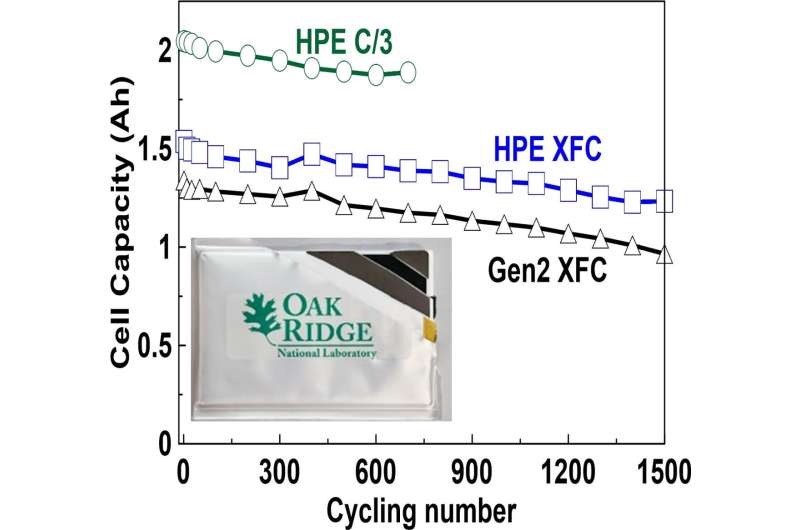This article has been reviewed according to Science X's editorial process and policies. Editors have highlighted the following attributes while ensuring the content's credibility:
fact-checked
trusted source
proofread
Charging ahead: New electrolyte goes extra mile for faster EV charging

Oak Ridge National Laboratory researchers are taking fast charging for electric vehicles, or EVs, to new extremes.
A team of battery scientists recently developed a lithium-ion battery material that not only recharges 80% of its capacity in 10 minutes but keeps that ability for 1,500 charging cycles.
When a battery operates or recharges, ions move between electrodes through a medium called the electrolyte. ORNL's Zhijia Du led a team who developed new formulations of lithium salts with carbonate solvents to form an electrolyte that maintains better ion flow over time and performs well when high current heats up the battery during extreme fast charging.
Project partners tested battery pouch cells made at ORNL's Battery Manufacturing Facility to prove the battery's safety and cycling characteristics. The paper is published in the journal Batteries & Supercaps.
"We found this new electrolyte formulation basically triples the Department of Energy's target for the lifespan of an extreme-fast-charging battery," Du said.
More information: Zhijia Du et al, A Novel High‐Performance Electrolyte for Extreme Fast Charging in Pilot Scale Lithium‐Ion Pouch Cells, Batteries & Supercaps (2023). DOI: 10.1002/batt.202300292


















